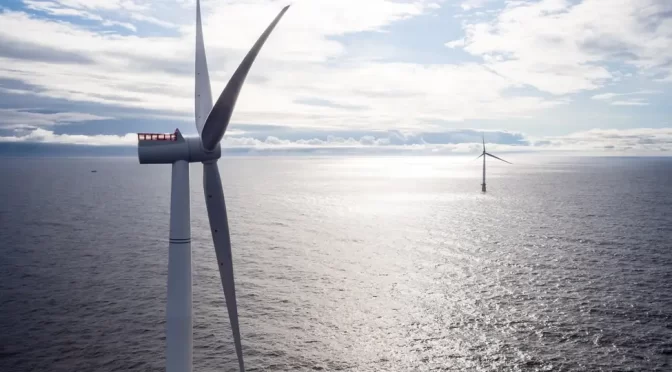The two energy companies, which are developing the FOWCA floating offshore wind project in the Canary Islands, and the business association will identify and carry out joint initiatives to promote safe and efficient development of the islands’ offshore wind supply chain.
This agreement ratifies the vocation of Naturgy and Equinor to take into account all social, environmental and economic sensitivities for the development of their offshore wind project, in a continuous dialogue with the territory.
The FOWCA project, of approximately 200 MW, would contribute to reducing CO2 emissions equivalent to 350,000 cars per year and, according to a study commissioned by the University of Las Palmas de Gran Canaria, it is estimated that it could generate more than 2,500 jobs in all its phases, including direct, indirect and induced positions.
Naturgy and Equinor today signed an agreement with the Canary Islands Maritime Cluster to promote and develop actions that enhance the competitiveness of the maritime sector of the archipelago, also for future offshore wind projects on the islands. The two energy companies are promoters of the Floating Offshore Wind Canarias (FOWCA) project, a floating offshore wind farm of approximately 200 MW to the east of Gran Canaria, in which they are working to qualify for the auction scheduled for 2023.
The commitment acquired with the Maritime Cluster of the Canary Islands will promote the economic and industrial competitiveness of the region, through the integration, creation, strengthening and sustainability of the companies and institutions that develop their activity within the value chain of the maritime sector and port.
In this way, Naturgy, the alliance of Naturgy and Equinor, together with the Canary Islands Maritime Cluster, will identify and carry out joint initiatives to promote the Canary Islands supply chain, through its integration into a sustainable development of marine renewable energies. , including the promotion of the FOWCA offshore wind project.
The agreement was ratified today within the framework of the I Offshore Wind Congress of the Spanish Wind Association held in Bilbao, and is a sign of the commitment of the two energy companies to take into account all social, environmental and economic sensitivities for development of the FOWCA project at the local level, in a continuous dialogue with the territory.
Both Equinor and Naturgy consider that the coexistence, compatibility and cooperation of marine renewable energies with biodiversity and other marine sectors is essential to implement this type of project, as well as a scrupulous commitment to all issues related to safety and health.
Agreement for the development of offshore wind power in Spain
This new step by Naturgy and Equinor strengthens the agreement reached last April to work together on the analysis and opportunities of offshore wind power in Spain. Both companies want to take advantage of their complementary capabilities to develop this technology, safely and efficiently, in order to develop an exemplary project. Floating offshore wind power has great potential in our country, the first step of which is expected to take place in the Canary Islands with the first offshore wind power auction next year.
The FOWCA project, which will connect to the transmission grid through the Red Eléctrica Española Barranco de Tirajana III substation, will be developed with semi-submersible floating platform technology. This technology, among other advantages, allows the installation of structures farthest from the coast.
This offshore wind farm will contribute to reducing CO2 emissions equivalent to 350,000 cars per year. According to a study commissioned to the University of Las Palmas de Gran Canaria, it is estimated that the project could generate more than 2,500 jobs in all its phases, including direct, indirect and induced positions.
naturgy
Naturgy maintains a very important commitment to the development of renewable energies and plans to reach 14 GW of installed power in 2025. The company plans to invest 14,000 million euros during the term of the 2021-2025 Strategic Plan, of which approximately two thirds will be dedicated to promoting renewable generation, to go from the current 5.4 GW in operation to more than 14 GW expected to be in operation in December 2025. These investments confirm the company’s strategic shift towards a more sustainable energy mix and its commitment to the energy transition. All this, without abandoning the fundamental objectives of creating value and growth for each of the businesses.

